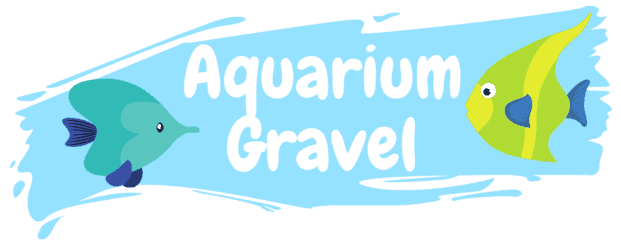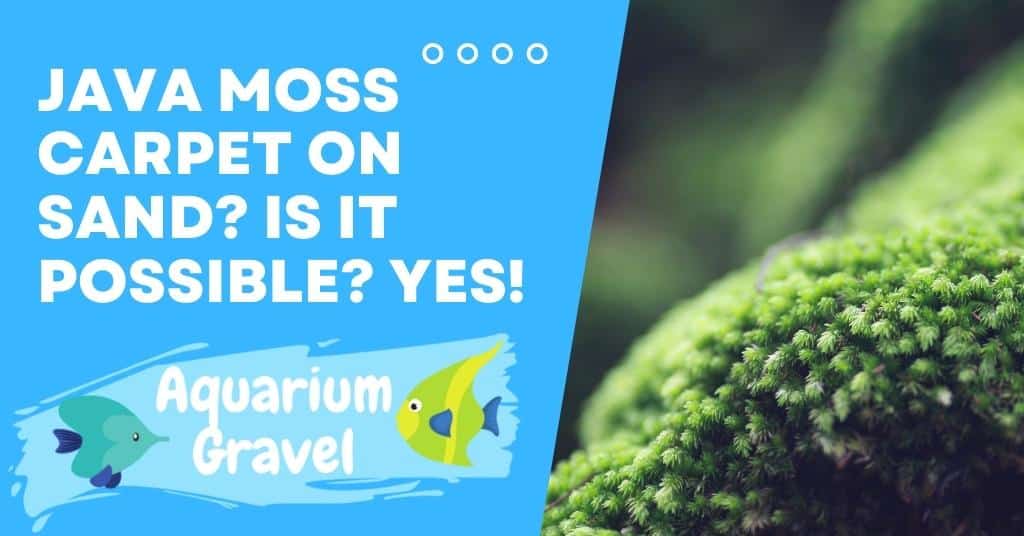Last Updated on March 23, 2022 by cmoarz
Moss is a beautiful and versatile plant that can be used to decorate many different types of surfaces. One of the most popular applications for java moss is in aquariums, where it can be used to create a natural-looking carpet on the bottom of the tank. But what if you want to grow java moss on sand? Is it possible to make a java moss carpet on sand? Yes, it is! In this article, we will show you how to do it.

Can java moss grow on sand?
Table of Contents
On its own, java moss can’t grow on sand without a little bit of help from you. Java moss shoots off tiny little roots called rhizoids.
They are basically like Velcro, or tiny little hands the java moss uses to attach itself onto surfaces.
The problem is that sand is too smooth for the java moss rhizoids to grab onto. So if you want java moss to grow on sand, you need to give it something rough to grab onto first.
Burying those little roots in the sand won’t work either. Sure, it will stay on the ground, But unless there is a current of water constantly flowing all around the moss, the buried part will just die off.

Can moss survive sand?
The good news is once you’ve managed to get it attached to something, java moss will happily grow and survive on the sand.
Java moss doesn’t need any nutrients from the substrate that it’s growing on top of, and grabs everything from the water column and the light that it needs to survive.
So if you want to create a java moss carpet on the sand, all you need to do is attach it to something like driftwood or rocks, and then let it thrive! It just needs plenty of light and water (with a bit of current).
For a flat surface for carpeting, I recommend a plastic or stainless steel mesh, such as this one: https://amzn.to/3JyGlSw

How do you anchor a java moss?
There are 3 main methods that I use to anchor java moss, Here they are:
Blender technique
The blender technique is a really fun way to attach moss to your aquarium by just painting it on. Mind you, this is only possible on a new tank that hasn’t had water in it yet and it will take a few weeks to take.
But assuming you’re looking to decorate your next tank before adding any fish and water to it, this is definitely the way to go.
The process is very easy. Add some moss into a blender or food processor with a bit of water, blend it for a couple of seconds and then use a paintbrush to brush it onto all your aquarium decorations, driftwood, or where ever else you might want it.
Add about an inch of water to the bottom of the tank, then cover the top of the tank with saran wrap to keep it nice and humid.
Turn on the aquarium light and use a spray bottle to spray everything down once a day to keep it moist.
Allow the moss to set and grow for a couple of weeks, then add water and fish like you normally would. Enjoy your full tank carpeting applied with nothing more than a paintbrush!
String or plastic ties
The blender method isn’t possible in an already established tank with water in it. So if you want to attach java moss to anything, including sand, You will need to tie it down.
This is pretty simple, Just lay your moss on your plastic or metal screen and tie it down lightly.
You can use string or just plastic ties, and many screen kits will come with something like this already.
You only need to tie it down lightly because after a while the java moss will use its rhizoids to attach itself securely to the screen mesh it’s tied to.
Glue
Glue is the ultimate moss attaching agent. No unsightly strings anywhere, it’s more versatile on what you can attach it to, and it will stay put for a long time.
I would only recommend using aquarium safe glue like this one: https://amzn.to/36mTOOS
Just be very careful not to get any on your hands or clothes as it’s very difficult to remove once it dries.
Just simply add a few drops and attached them to the desired object. It’s easier to glue by removing the object from the water, although some glues will still cure underwater like the one I linked above.
Just be sure to follow the instructions on whatever glue you purchase, And stay away from none aquarium-safe glues as they may have dangerous chemicals in them that can harm your fish and your plants!

What substrate is best for java moss?
Java moss is super flexible when it comes to the sort of substrate it can live on. Anything that it can cling to is considered a good substrate, but even the ones it can’t cling to are good too if you help it out a bit.
You can attach java moss to pretty much anything using some string or aquarium-safe glue. Once it’s attached, java moss will happily grow on any substrate, including sand.
Some people even use java moss to create living walls! All you need is a frame and java moss, and you can create a beautiful vertical moss wall in your aquarium.
But even java moss has its personal preferences, and in this case, that’s driftwood and rough stones.
It loves to attach itself to these things and will create a beautiful carpet over them given some time.
So, java moss on sand? It’s possible and it’s actually quite easy! Just follow the methods above and you’ll have a java moss carpet in no time. Thanks for reading!
About
Owner of AquariumGravel.com and also owner of actual Aquarium Gravel believe it or not! ;). Setting up beautiful aquarium sceneries and habitats since I was very young. Enjoy!
- Web |
- More Posts(290)

